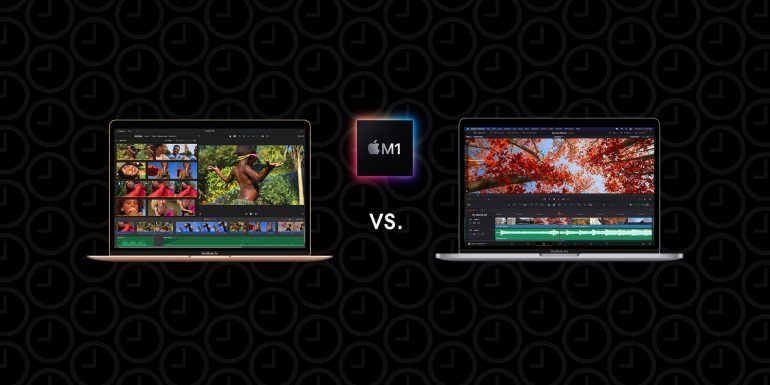Apple’s M1 MacBooks are officially here and bring some major performance gains. At first glance, the new MacBook Air and 13-inch MacBook Pro seem quite similar with the same CPU/GPU, same ports, same FaceTime camera, and more. However, let’s take a closer look at the M1 MacBook Air vs Pro to see what differentiates the two to help you decide which to buy.
Initial reactions to Apple unveiling the new M1 MacBook Air and MacBook Pro around the web included confusion about what the point was in continuing to offer both since they appear so similar. While it is impressive and somewhat confusing that the $999 base M1 MacBook Air has the same CPU/GPU and neural engine as the $1,299 and higher M1 MacBook Pro, there are some notable differences that are worth considering before making a decision.
While the M1 MacBooks provide much-improved performance across the board (speed and battery life being two big aspects), there are a few areas where they’re less capable or at least not improved compared to the Intel predecessors. In the charts below, we’ve highlighted differences between the M1 MacBook Air and Pro in bold.
M1 MacBook Air vs Pro hardware comparison

You’re getting the phenomenal M1 chip with both machines with 4 high-efficiency cores and 4 high-performance cores for the CPU. But interestingly enough, it’s actually a 7-core GPU on the base MacBook Air models instead of the 8-core on the higher end Air configurations and all the MacBook Pro models. My colleague Ben Lovejoy wrote an explainer on what’s happening with that.
Beyond the slight GPU difference, you’re getting active cooling with the MacBook Pro. That’s notable as it allows the notebook to sustain high performance under sustained loads for longer.
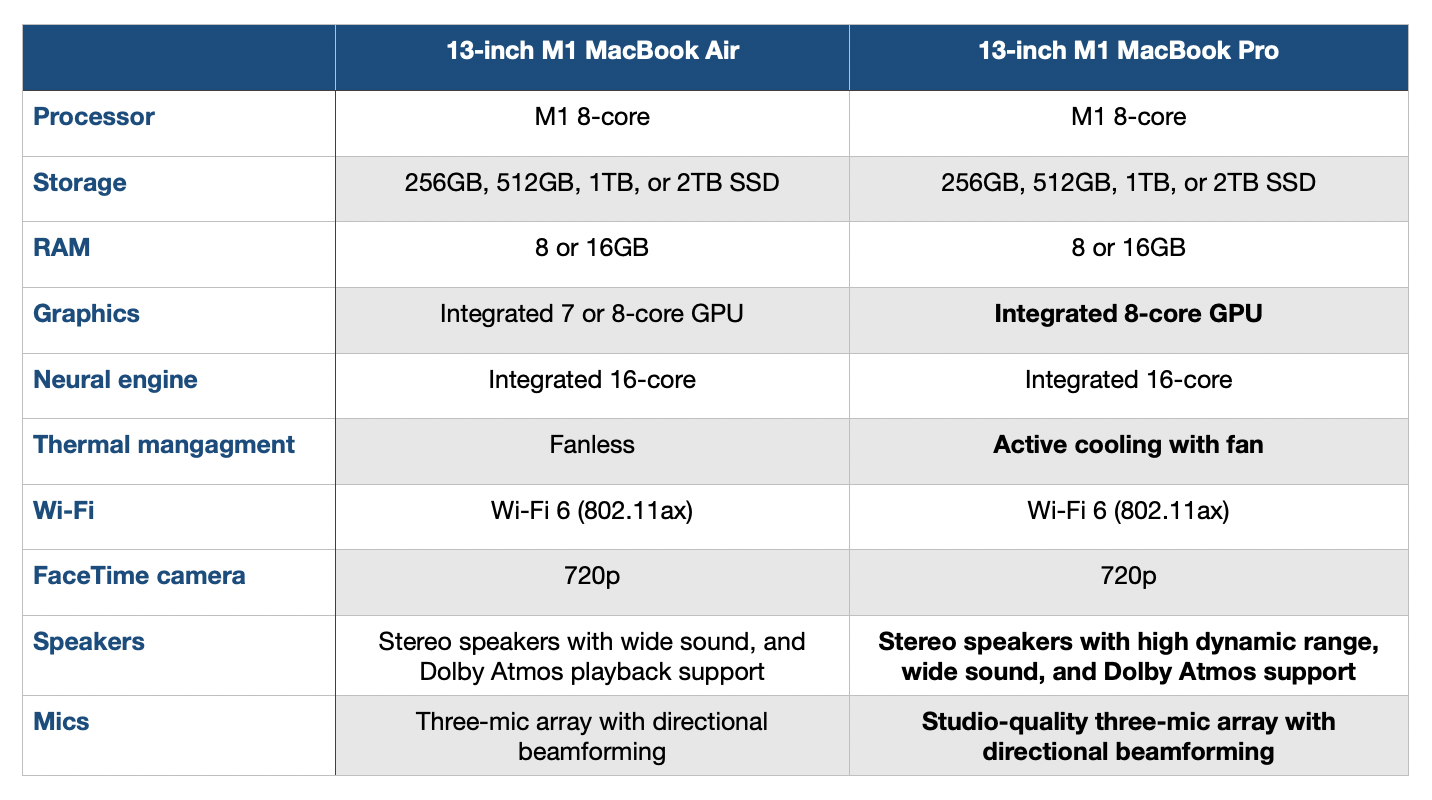
Maybe more minor in the big picture, but the M1 MacBook Pro features high dynamic range with its stereo speakers and the mics are “studio-quality.”
It’s great to see Wi-Fi 6 support on both models! However, it’s a real bummer to see the 720p FaceTime camera stick around. Apple says it’s improved the image quality with a new image signal processor. But reviews say the quality is still bad.
If you have questions or qualms about RAM being limited to just 16GB, be sure to check out my colleague Stephen Hall pushing the base M1 MacBook Air to the limit, showcasing super impressive performance. If you’re not a power user, 8GB RAM with these machines could likely be more than enough.
Bottom line: You’re going to see awesome performance for everyday computing with both computers but if you lean toward heavier workflows for longer periods of time, the active cooling on the MacBook Pro may be enough to make your decision.
M1 MacBook Air vs Pro display comparison
If screen brightness is important to you, chalk up another point for the MacBook Pro with its 500 nits brightness vs. 400 on the MacBook Air. Otherwise, you’re getting the same great Retina display on both notebooks.

M1 MacBook Air vs Pro I/O comparison
The only difference between the two with the rest of the I/O not covered above is the Touch Bar coming on the MacBook Pro and dedicated row of function keys (new ones too for dictation, spotlight, more) on the MacBook Air.
However, the specs below also reveal a few downsides compared to older Intel MacBooks. First, you’re getting a maximum of 2 USB-C (USB4)/Thunderbolt ports on all the M1 models. The higher-end Intel 13-inch MacBook Pro offered 4 (2 on each side).
The second downgrade is external display support. These M1 MacBooks support a maximum of 1 external display up to 6K at 60Hz. The previous-gen Intel MacBooks could run up to 2 4K displays at 60Hz in addition to working with up to 1 6K display at 60Hz.
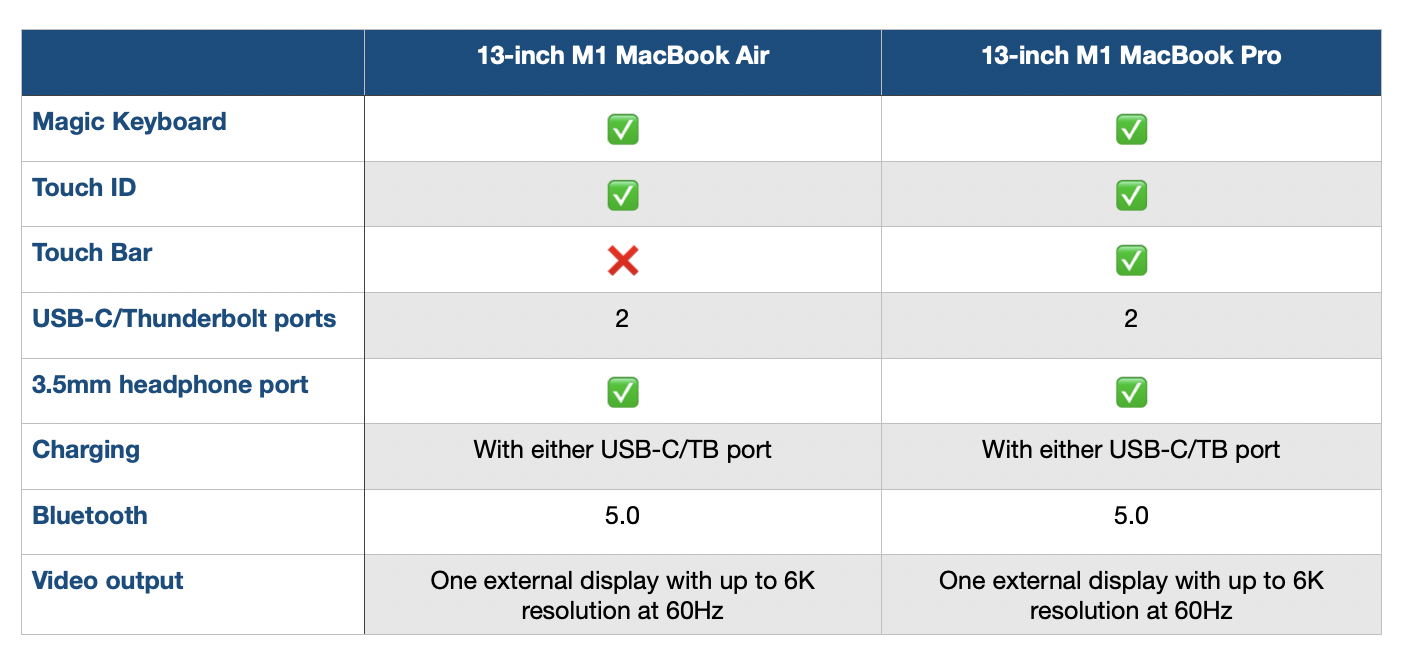
Size, weight, and finish comparison
Everything here is identical to the previous Intel MacBooks except for the 13-inch M1 MacBook Pro shaving 0.1 ounce to go from its predecessors 3.1 pounds.
If the gold color is appealing, keep in mind it’s only available with the MacBook Air.
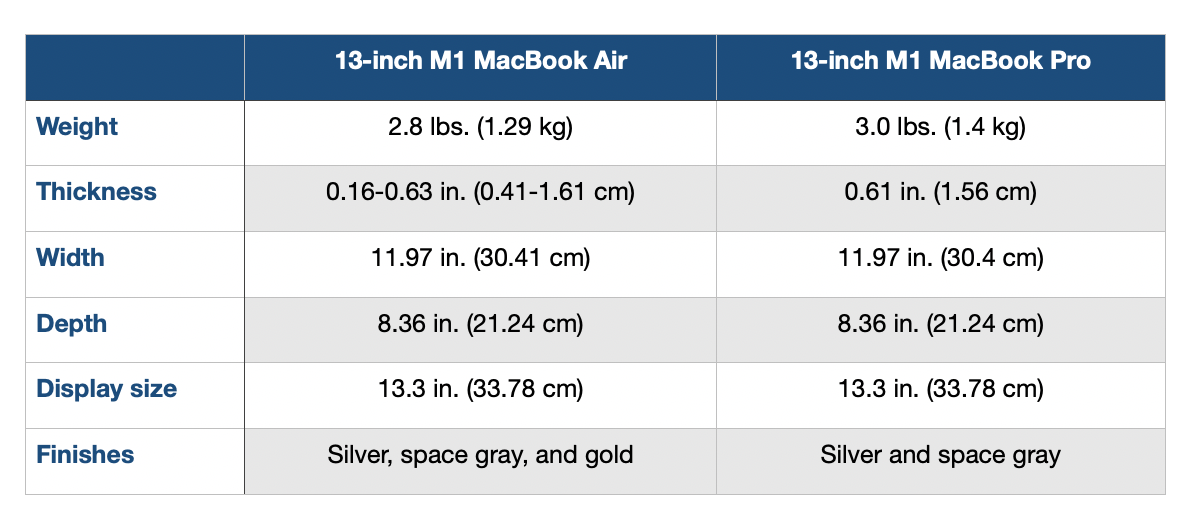
Battery life comparison
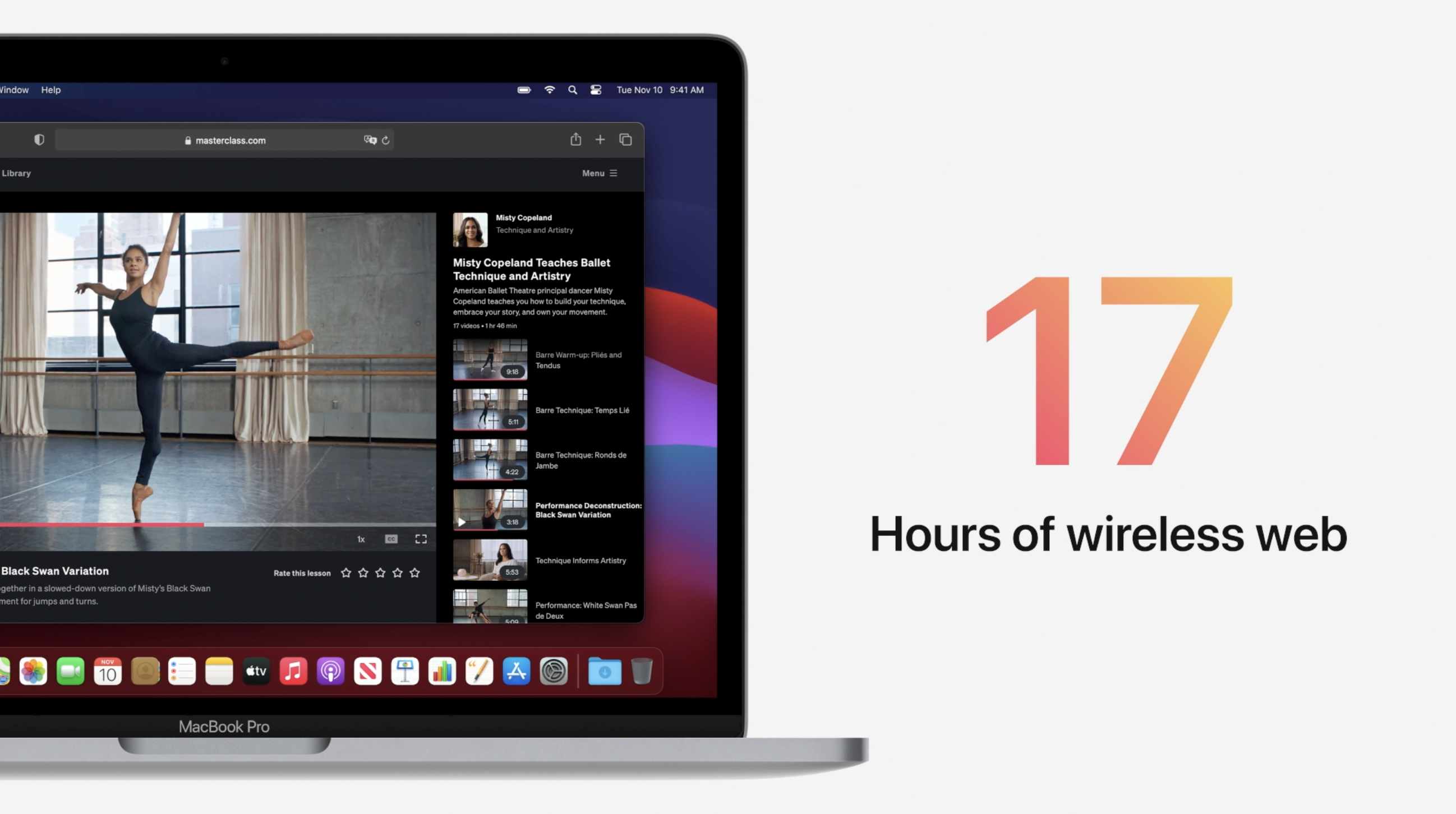
Real-life use is showing massive battery life gains for the M1 MacBooks compared to the old Intel models. However, keep in mind you probably won’t see exactly the Apple ratings of up to 15-20 hours without compromises like turning down display brightness for light workflows.
But in any case, the power efficiency and battery life improvements are big!

Pricing comparison
Across the different configurations, when looking at the same storage and RAM, it’s a $300 difference between the M1 MacBook Air and MacBook Pro.
For now, the stocked models are the 256GB/8GB RAM and 512GB/8GB RAM configurations. Models with 16GB RAM will see longer shipping times as they are custom orders.

M1 MacBook Air vs Pro wrap-up
Hopefully, you’ve got clarity now on which M1 MacBook is right for you. If you value longer battery life, active cooling for extended heavy workloads, a slightly brighter screen, and/or like the Touch Bar, the MacBook Pro is the way to go and offers a lot of value starting at $1,299. If those things aren’t important to you, the MacBook Air is the choice starting at a really reasonable $999 for everything you’re getting.

FTC: We use income earning auto affiliate links. More.

Devoted web advocate. Bacon scholar. Internet lover. Passionate twitteraholic. Unable to type with boxing gloves on. Lifelong beer fanatic.

